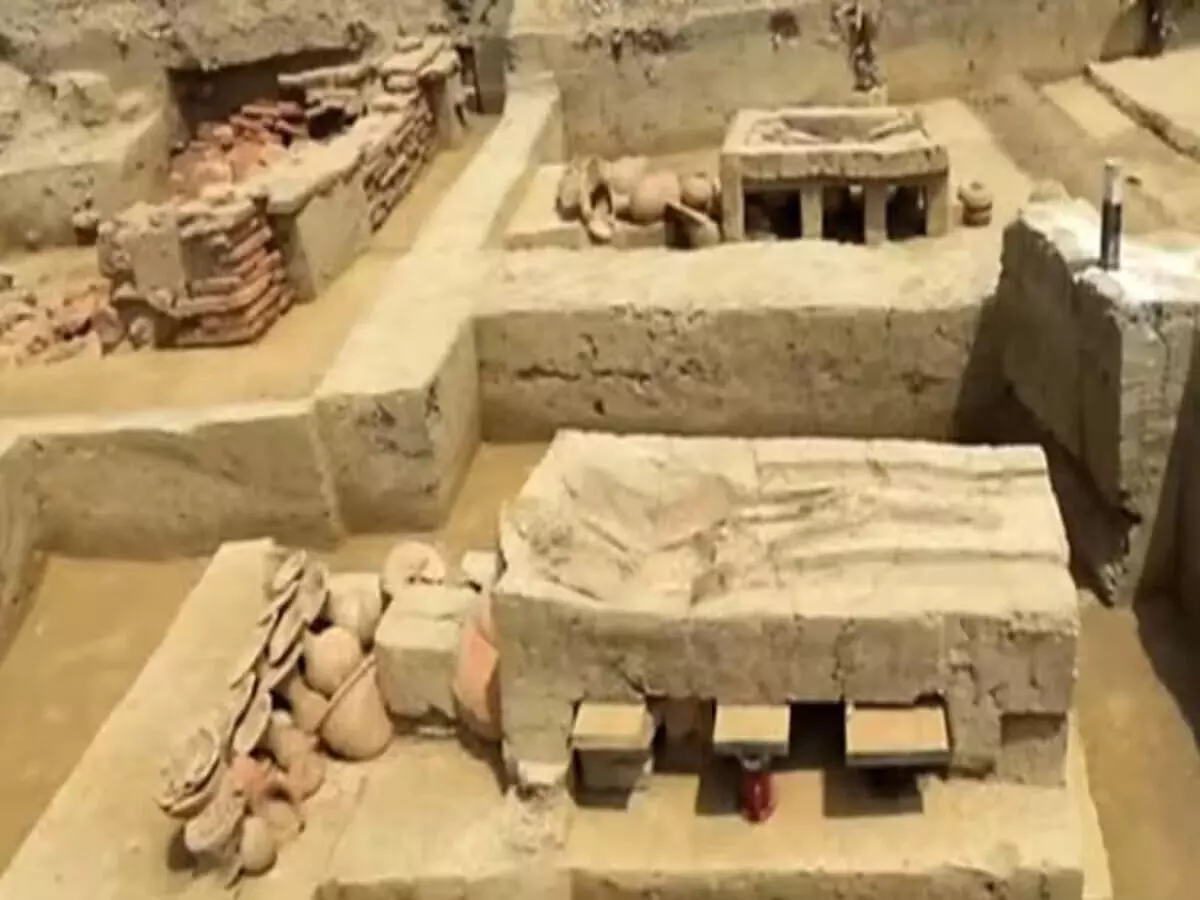TRENDING TAGS :
The Mysteries of Sinauli: A Priceless Heritage of Ancient Indian History
History of Sinauli: A Crucial Link to India’s Past
History of Sinauli: A Crucial Link to India’s Past
India’s history is filled with mysteries and unsolved puzzles. Archaeological excavations from time to time provide evidence that reshapes our understanding of history. One such significant discovery was made in the small village of Sinauli in the Baghpat district of Uttar Pradesh. This excavation has become one of the most important archaeological sites in the Indian subcontinent.
The remains found at Sinauli shocked historians and archaeologists, as they included 4,000-year-old copper chariots, weapons, jewelry, and human skeletons. These discoveries have shed light on the connection between the Indus Valley Civilization and the Vedic era, taking us closer to the enigmatic stories of Indian history that were previously known only through ancient texts.
The Beginning of Historical Discoveries in Sinauli
Sinauli is a peaceful, green village in the Baghpat district of Uttar Pradesh, located about eight kilometers from the Yamuna River. This village came into the limelight due to its connection with ancient history and archaeological discoveries.
The historical discussion of Sinauli first began in 2005 when a local farmer, Prabhash Sharma, discovered ancient artifacts while digging in his field. When this news reached the Archaeological Survey of India (ASI), a thorough excavation was initiated.
Initial Excavation and Discoveries (2005)
The first phase of excavation uncovered 106 human skeletons. Carbon dating suggested that these skeletons were over 3,000 years old, indicating that this site was part of an ancient civilization.
The Second and Third Excavations (2017-2019)
The excavations in 2017 and 2019 brought even more thrilling discoveries. Led by archaeologists Sanjay Manik Talwar and Dr. S.K. Mani, the excavation revealed several mysterious objects that redefined Indian history.
Major Discoveries at Sinauli
Copper Chariots
One of the most significant discoveries was copper chariots, suggesting that around 2000 BCE, India had developed military strategies and transportation systems. This discovery also provides evidence that horse-drawn chariots were used in India much earlier than previously believed, as mentioned in the Rigveda.
Weapons and Armor
Swords, shields, and armor were also unearthed, all made of copper and showcasing advanced craftsmanship. This proves that the people of that time were skilled in warfare and had an organized military structure.
Burial Sites and Human Skeletons
Several burial sites were discovered, containing human skeletons. Some bodies were buried with weapons and jewelry, indicating a warrior society. Additionally, the presence of women’s skeletons with weapons suggests that women also held significant roles in society.
Jewelry and Pottery
Various types of jewelry and pottery were also found, highlighting the artistic and decorative skills of the civilization.
Sinauli & the Mahabharata Era
Some historians believe that the findings of Sinauli might be linked to the Mahabharata period. There is speculation that this site could have been part of an ancient kingdom near Kurukshetra. The presence of copper chariots and warrior burials strengthens the belief that this region was once a stronghold of brave warriors.
Sinauli: A Confluence of Diverse Communities
Sinauli village has a population of approximately 11,000 people, with different communities living in harmony. The majority of the population consists of Jats, followed by Brahmins. Additionally, Dalit and Muslim communities also coexist peacefully.
Most villagers are dependent on agriculture, while some are employed in government jobs. Around 1,000 people travel daily to nearby towns like Baraut for daily wage work or private jobs. The villagers lead a simple and clean lifestyle, strengthening their social fabric.
The Historical Impact of Sinauli’s Discoveries
Reevaluation of Indian Warfare History
Previously, it was believed that chariot warfare in India emerged around 1500-1200 BCE. However, the discovery of copper chariots at Sinauli pushes this timeline back to 2000 BCE.
A Part of the Indus-Saraswati Civilization?
Some scholars believe that the Sinauli civilization might be a branch of the Indus-Saraswati civilization.
Influence on Vedic and Prehistoric Indian Culture
This discovery provides new evidence for understanding the Vedic era and earlier Indian civilizations.
Land Preserved as a National Monument Area
The Archaeological Survey of India (ASI) has declared 28 hectares of land belonging to 40 farmers in Sinauli as a national monument area. This land will be protected with fencing. However, farmers will still be allowed to cultivate their land, but any construction will require prior permission from ASI.
Controversies and Discussions Related to the Discovery
The excavation at Sinauli has sparked various debates. Some historians consider these findings as early evidence of Vedic culture, while others see them as an extension of the Indus Valley Civilization. Regardless of differing opinions, this discovery strengthens the evidence of India’s ancient culture and military prowess.
Conclusion
The discoveries at Sinauli have provided invaluable insights into India’s ancient past. The presence of chariots, weapons, warrior burials, and artifacts challenges previous historical beliefs and sheds light on the advanced nature of ancient Indian civilization. Whether connected to the Indus Valley Civilization or the Vedic era, Sinauli remains one of the most significant archaeological discoveries in Indian history.


